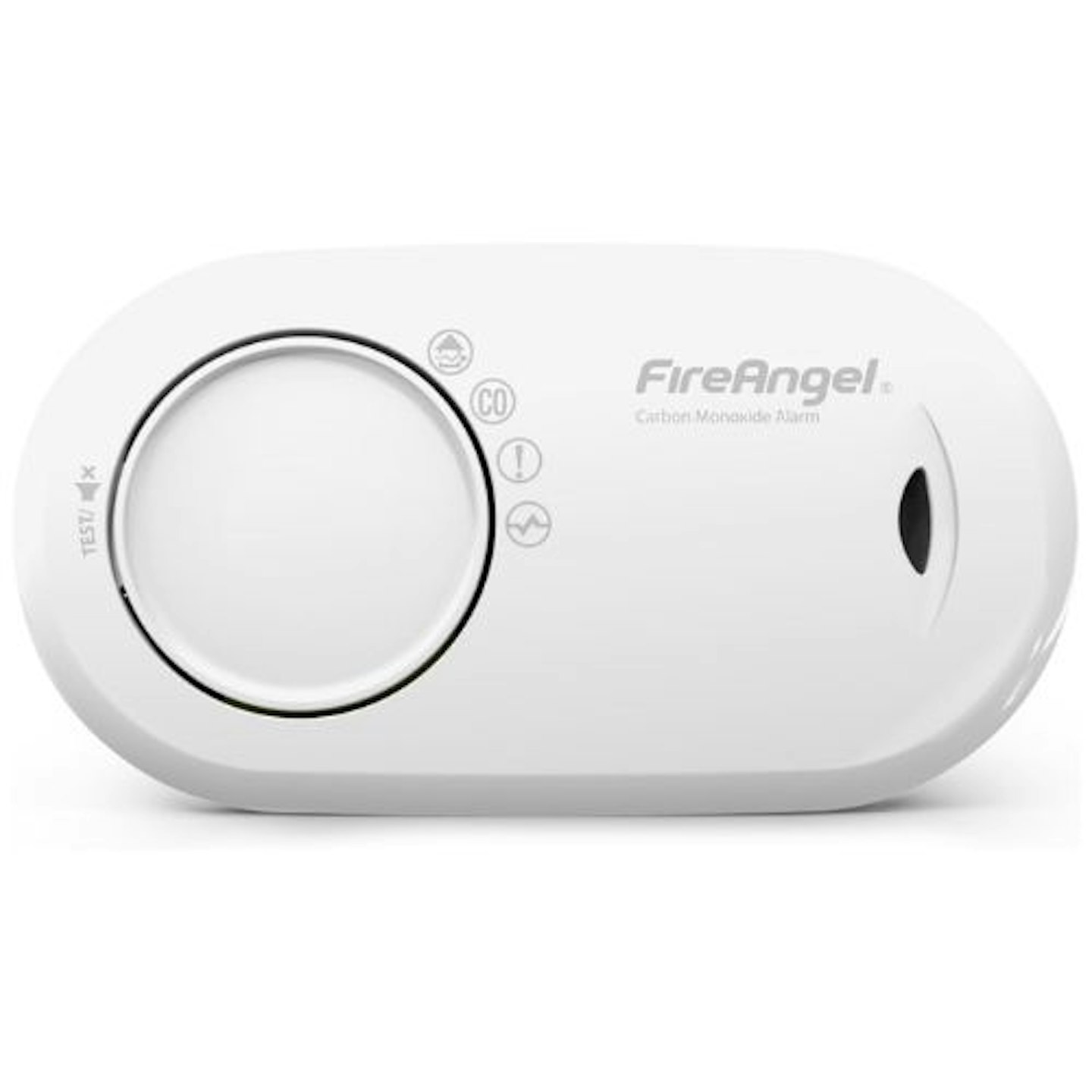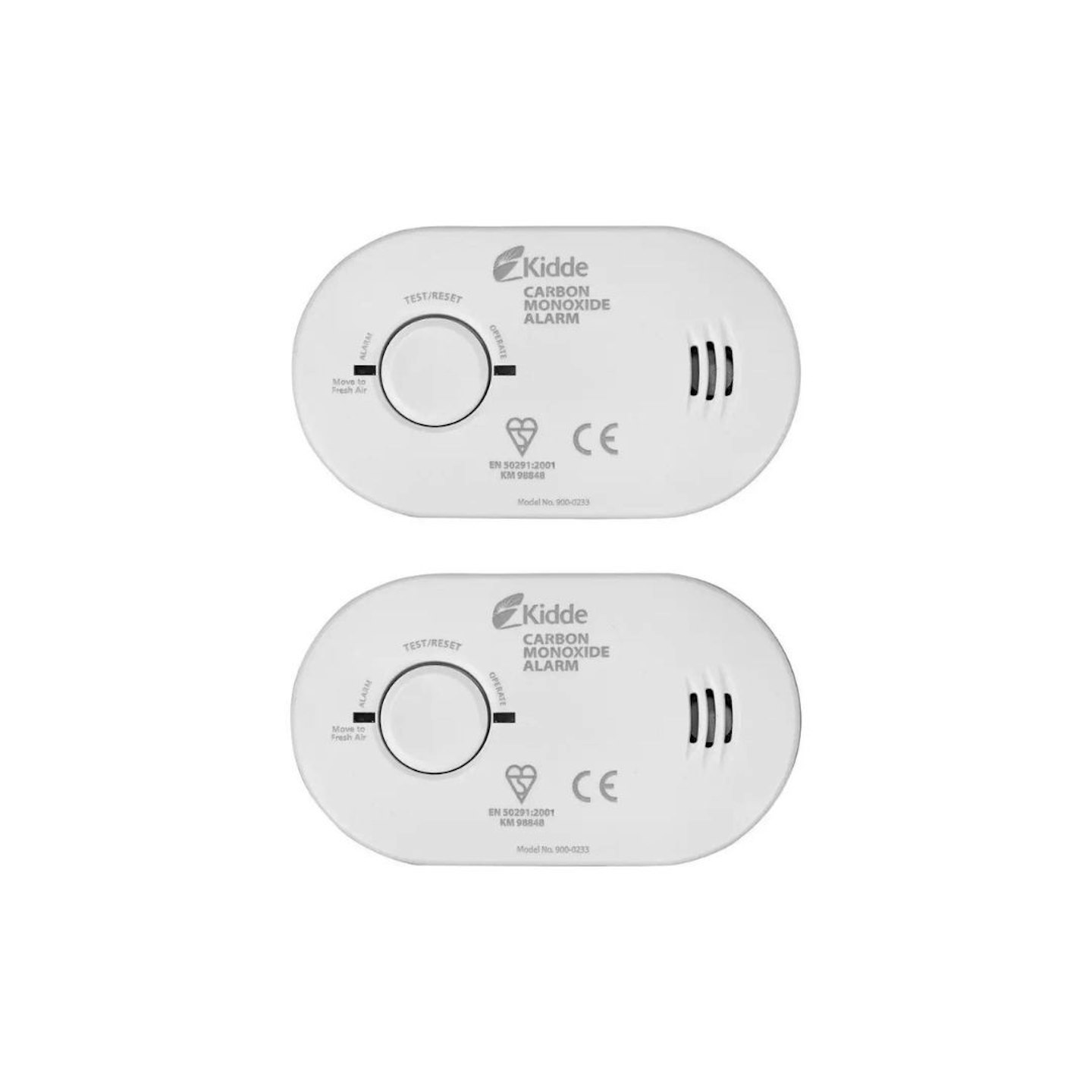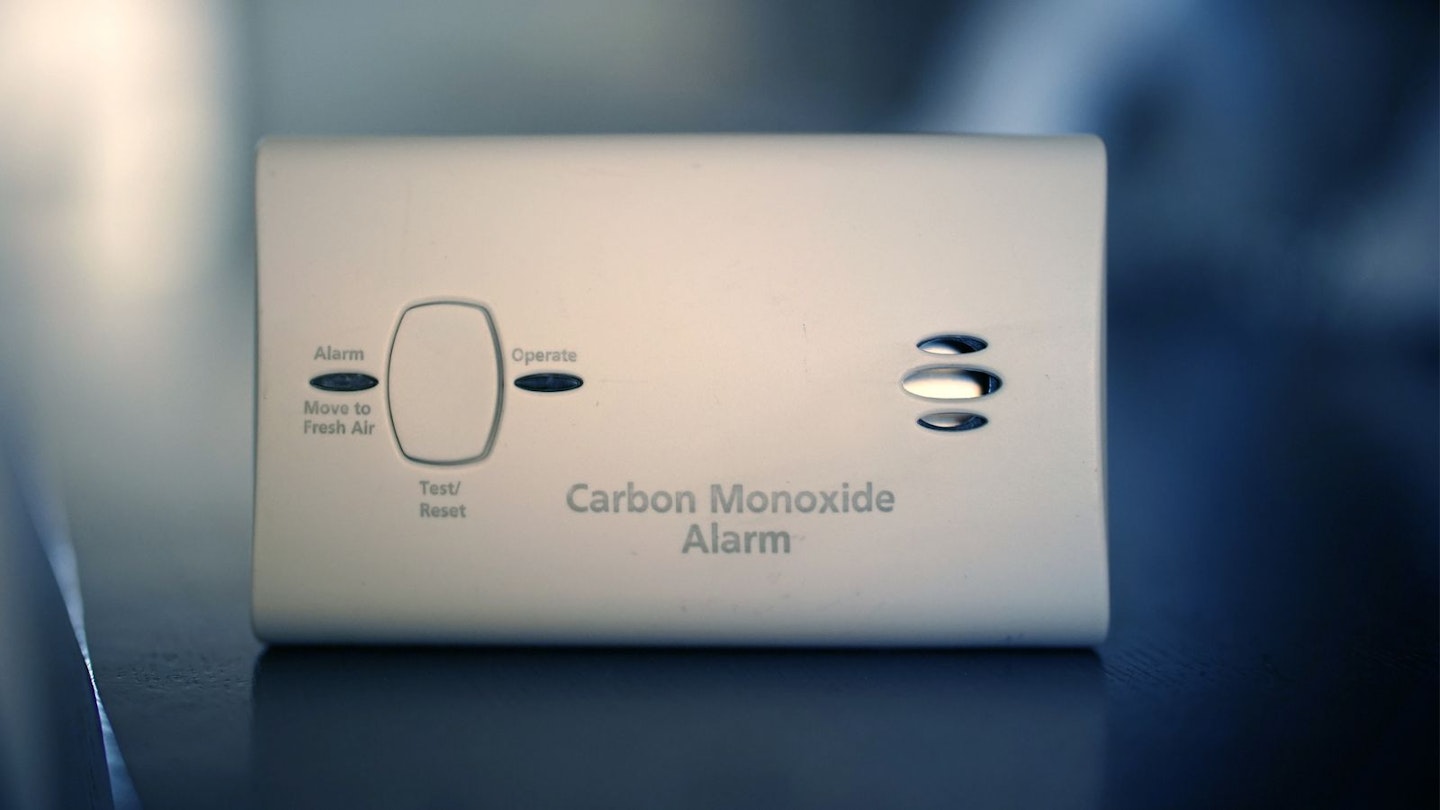We've all heard the annoying sound of a smoke alarm when a Sunday fry-up doesn't go to plan, frantically opening windows to make the beeping go away. Much like a smoke alarm, a carbon monoxide detector operates by alerting us of the presence of lethal gas, which is crucial to ensure the safety of any household.
When it comes to choosing the right detector, there's no room for error. For that reason, we've rounded up the best carbon monoxide detectors in terms of quality, longevity, and price.
But what causes carbon monoxide in the home? Appliances such as boilers, gas fires, central heating systems, and open fires can all lead to carbon monoxide exposure, where gas does not burn fully. If a household appliance, like a cooker or boiler, has not been installed or maintained adequately, this could lead to the presence of carbon monoxide. Camp stoves, charcoal grills, and burning fuels in an enclosed space can also lead to the build-up of carbon monoxide in your home.
Best carbon monoxide detector at a glance
Luckily, there are plenty of things you can do to prevent the release of carbon monoxide (CO), the main one being installing a carbon monoxide detector.
Remember, if your CO detector ever sounds, leave your house immediately and call 999.
How we tested these carbon monoxide detectors
Our Commerical Content Writer Arabella Horspool unboxed the following carbon monoxide detectors, placed the batteries in and used the 'Test' feature on the devices to simulate a real "alarm". She assessed the pitch and frequency of the alarms, and how clear the indicators were (e.g.: digital screens, lights etc.), as well as how easy they are to install and if they had any standout features or controls.
The best carbon monoxide detectors 2025
TESTED
Fireangel's multi-function carbon monoxide detector will provide audible and visual warnings of the early presence of CO in your home. I loved how the LCD screen constantly monitors CO levels, but the real bonus? It also gives you humidity and temperature readings, which are super handy for keeping an eye on your home environment. The LCD screen was easy to read but one slight niggle I have with it is that it doesn't display all the information that it's caple of doing (like the humidity and temperature readings) all on the same screen so you need to cycle through all the displays with the button.
It self-tests the environment so you have peace of mind that it's always doing its job. The self-testing is quite quiet, so there are no annoying beeps while you're trying to relax, just almost-silent reassurance that it's working. The 10-year lifespan means you don't need to worry about changing it every so often, and it's also portable, meaning you can take it with you to a holiday home, etc.
Reviewed by Yours Commercial Content Writer, Arabella Horspool.
Pros
- Continuously mointors CO levels and also provides humidity and temperature readings, making it extra useful
- Quiet self testing so there's no loud beeps, just subtle reassurance that it's working properly
- Portable so you can take it with you anywhere for peace of mind, such as a holiday home
Cons
- Doesn't display all the functions at once - need to cycle through with the button
| Dimensions: | 7.6 x 12 x 3.1cm |
| Power source: | Battery powered (included) |
TESTED
A truly 'smart detector', the Google Nest Protect is more than just a smoke and carbon monoxide alarm; it's a reassuring presence in your home. With a friendly human voice, it provides early warnings, telling you exactly where danger is. And because it connects to your phone, you'll get alerts even when you're away. If carbon monoxide levels become dangerous, the alarm sounds alongside pulsing red lights to ensure you're aware.
Our Editor, Claire Tapley, tested this for Yours.co.uk and was particularly impressed with its smart features, noting how the built-in pathlight makes nighttime trips easier. Whether heading to the bathroom or grabbing a midnight snack, there's no need to switch on bright overhead lights. She also highlighted how the Nest Protect syncs seamlessly with your phone, allowing you to check a timeline of events and control it remotely. With self-tests running over 400 times daily, it's a set-it-and-forget-it safety measure that offers real peace of mind.
While it may be pricier than other testers included on our list, Claire thinks it's well worth the investment, especially for those already using Nest devices, as they can all be managed from one app.
Pros
- Connects to your phone so you'll get notifications if smoke or carbon monoxide is detected in your home even if you're away
- Has a built-in pathlight so it lights up when you walk underneath it, making moving about at night easier without disrupting others
- It self tests and runs over 400 self-checks daily to provide reassurance without you manually needing to do anything
Cons
- A high priced option compared to others we've featured but worth it for the features it has
| Dimensions: | 16 x 16.2 x 7.2cm |
| Power source: | Battery operated |
TESTED
Upon opening the Kidde 5CO Battery Powered Carbon Monoxide Alarm, I felt like it was easy to use, and I was correct. I slotted in the two batteries that came with the product, and it beeped once (which was so loud that it made me jump) to indicate that it was on and working.
Then, I slotted on the baseplate, pressed the 'TEST WEEKLY/RESET' button to give it a try and it the 'OPERATE' button lit up green, indicating that it was on. It does 4 beeps and then has a five-second pause, before beeping again.
I like its flexibility, as it can be mounted onto the wall with the kit provided, or it can work just as well freestanding, making it ideal for taking with you on holiday if you want some peace of mind.
Unlike some of the options on the list, it doesn't have a digital screen, but this isn't necessarily needed as the light indicators are simple enough to understand.
Reviewed by Yours Commercial Content Writer, Arabella Horspool.
Pros
- It's super simple to use and set up as it only need you to insert batteries and press the test button to ensure it's working as it should
- It can be either wall-mounted or used freestanding so you can take it with you while travelling for additional peace of mind
- The light indicators make it easy to understand
Cons
- Unlike some of the others on our list, it doesn't have a digital display
| Dimensions: | 12.7 x 7.3 x 3.9cm |
| Power source: | 2 AA batteries (included) |
TESTED
Not only is this device modern-looking and sleek, but it's also highly accurate and efficient. Designed in a way to give you the earliest possible warning of carbon monoxide presence, the X-Sense alarm will put your mind at rest. The unit is battery-operated, so there's no need to worry about playing around with wires. Measurements are taken every 10 seconds and are clearly displayed on the large LCD display. Keep in mind that this one is designed to be wall-mounted, so you won't be able to use it freestanding around your home.
I put the batteries in and pressed the test button and boy, was it loud - It has such a loud and high frequency that I'd recommend it for large homes or businesses, as well as those that may be hard of hearing.
Reviewed by Yours Commercial Content Writer, Arabella Horspool.
Pros
- Highly accurate and efficient as it takes CO measurements every 10 seconds for early detection
- Modern and sleek design so it blends seamlessly into any modern home
- Loud alarm so it's ideal for big homes, business premises and for anyone who is hard of hearing
Cons
- It's designed to be a wall mounted unit so you won't be able to use it as a freestanding unit
| Dimensions: | 11 x 11 x 3.7cm |
| Power source: | Battery powered (included) |
TESTED
With a seven-year lifespan, the Mercury 350.139 Carbon Monoxide Detector/Alarm is a fantastic and reliable carbon monoxide detector. It's battery-operated, meaning it will still work during power cuts and provides clear, confident CO readings on the LCD display. Its more compact size and the fact it's battery-operated and freestanding means you can easily move this around your home or take it with you on holiday. The LED lights will beam green for power, amber for fault, and red for alarm, keeping you alert and informed at all times.
It has more of a higher-pitched, faster beep than the other carbon monoxide alarms I tested. One thing that lets it down slightly in my eyes is that the base is quite loose, but that could just have been the one I tried that had this issue.
Reviewed by Yours Commercial Content Writer, Arabella Horspool.
Pros
- As it's battery-oporated, it'll continue to work even during power cuts
- It's compact and freestanding so great for moving around your home or taking with you on holiday
- Clear alerts on the LCD display and colour coded LED lights to keep you informed at all times
Cons
- Arabella found the base plate to be a little bit loose, though this could just a one-off issue with the one she tested
| Dimensions: | 2.7 x 7.7 x 1.1cm |
| Power source: | Battery powered (included) |
Best long-life carbon monoxide detector
 FireAngel
FireAngelFor peace of mind, the FireAngel Carbon Monoxide Detector has a 10-year, life-sealed battery, so you won't have to worry about forgetting to change it regularly. In the presence of the toxic gas, it will let out an alert via four loud chirps (85 dB(A) and an LED red light. However, a couple of users say that it's more suited to smaller houses, as the "alarming sound is a little too small", but most say that it's loud enough.
Pros
- Battery life is long and it's convenient as you don't have to change it
- Uses sound and light warnings for maximum impact with safety alerts
Cons
- Alarm sound could be louder for bigger houses, a few users say
Best twin pack
 Credit: Argos
Credit: Argos This Kidde Lifesaver Carbon Monoxide Alarm Twin Pack is the same alarm that we've featured above as 'best for flexibility' but it comes in a handy two-pack. You can ensure the safety of your home by equipping it with a crucial defence against the 'silent killer,' carbon monoxide, but equally keep another one in your bag and use it for peace of mind when you're travelling. Both alarms operate using battery power, so it's simple to set them up, but you know they'll also both work during a power cut, too.
While both the Kidde alarms in this duo pack don't have a digital display, when Arabella tested the single one, she found it still had a very clear way to see if carbon monoxide is detected in the home with light indicators as well as a loud alarm. The alarm might make you jump if you're not expecting it, but the loudness is great if you're hard of hearing.
Pros
- Two in a pack which mean you can use one at home and one while travelling
- They offer flexibility as you can pop one on the wall or leave it freestanding
- Clear light signals provide a straightforward way to check its status at a glance
Cons
- Compared to some other options we've reviewed, the Kiddle alarms lack a digital display
| Dimensions: | 12.7 x 7.3 x 3.9cm |
| Power source: | Battery operated |
Best carbon monoxide detector FAQs
Where should I install my CO detector?
Place your carbon monoxide detector high on the wall in any room that contains a fuel-burning appliance. You should also place a detector on every floor of your house in the hallways, close enough to bedrooms so that you can be alerted should the detector sound in the middle of the night.
How to prevent carbon monoxide poisoning
Prevention is key when it comes to carbon monoxide, and these are a few things that will help hinder the chance of exposure.
• Install battery-powered carbon monoxide detectors and place them in hallways close to bedrooms or spaces where people sleep. Make sure to change the batteries once or twice a year, and replace your CO detector every five years.
• Have appliances regularly serviced by qualified professionals.
• Make sure your chimney is swept thoroughly once a year.
• You should never burn charcoal inside your home.
• Never use a gas appliance that isn't properly vented.
• You should never use a generator in your home or within six metres of a window or vent.
What causes carbon monoxide in the home?
Carbon monoxide can result from fuel-burning appliances such as boilers, gas fires, heating systems, cookers, open fires, and water heaters.
How can you tell if there is carbon monoxide in your house?
Carbon monoxide is both odourless and colourless, meaning you can't see or smell it. This is part of what makes CO so dangerous and hard to detect. The best, most effective way to tell if there is carbon monoxide in your home is by installing a CO detector. Having said that, there are some tell-tale signs which might let you know that something is wrong. Things like heavy condensation in a room where there's an appliance or brown-yellow stains or soot around a fuel appliance are both signs of dangerous carbon monoxide levels.
If you have any concerns about CO exposure, leave your home and call the emergency gas number at 0800 111 999.
How does carbon monoxide affect the body?
According to the NHS, symptoms of mild carbon monoxide poisoning are as follows:
• Tension-type headache
• Dizziness
• Feeling and being sick
• Tiredness and confusion
• Flu-like symptoms
• Shortness of breath
• Stomach pain

If you have any concerns about CO exposure, leave your home and call the emergency gas number at 0800 111 999.
Eleanor Weaver is the Deputy Homes & Garden Product Editor for Yours, specialising in home décor, furnishings and appliances. Having worked commercially on Yours magazine and Yours.co.uk for the past six years, she's previously hosted Yours Live events and loves looking for home inspiration online.
Arabella Horspool is a Commercial Content Writer for Yours at Bauer Media. She's a bookworm who is passionate about TV, film and theatre. She enjoys cooking, scrapbooking, playing board games and going on walks with her three dogs.














